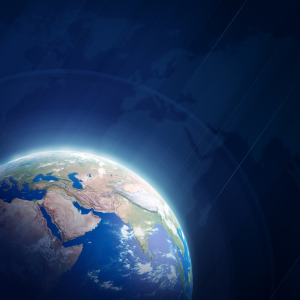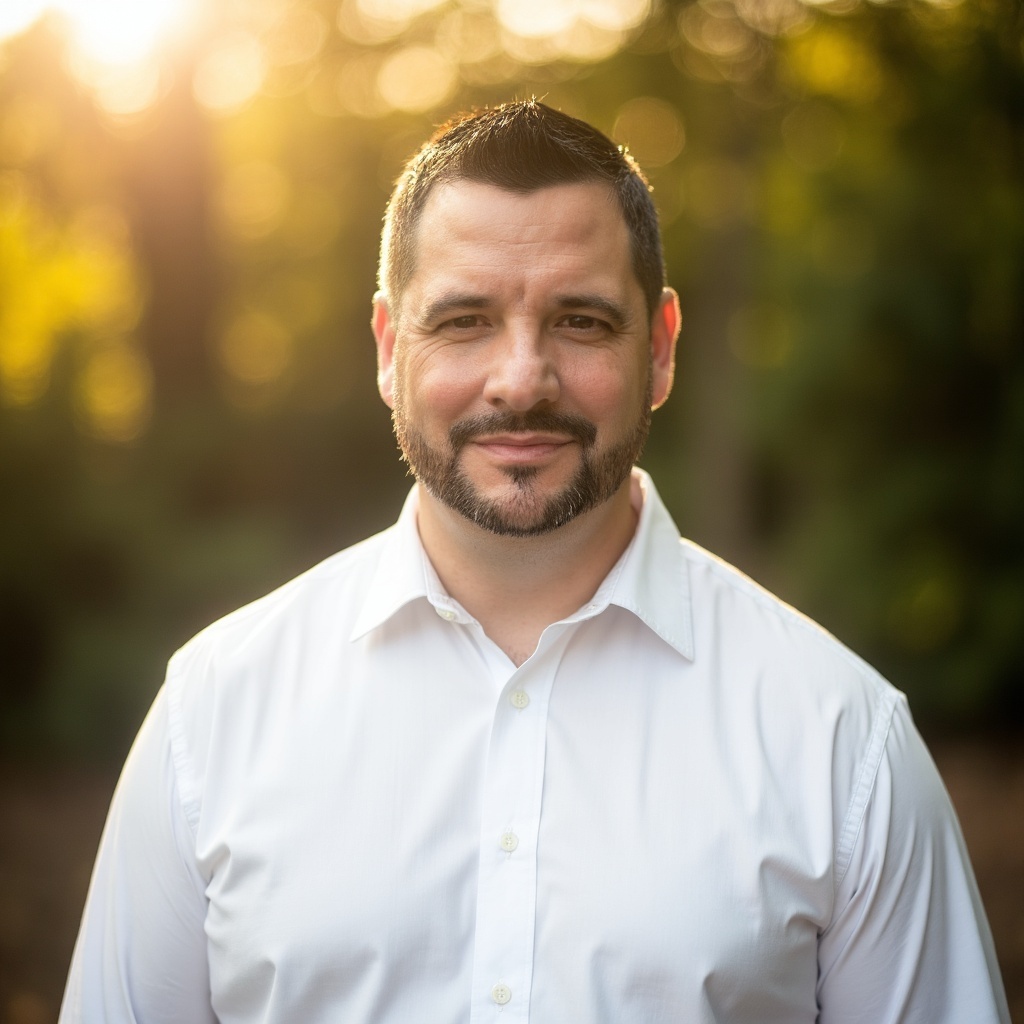Friday
A World Built on Pain: The Call for Healing and Change
By George Cassidy Payne
We live in a world where systems of power and dominance are designed to destroy the very planet that sustains us. These systems, though old in origin, have become more visible than ever before. They are built on extraction, exploitation, and a blind pursuit of progress that disregards the balance of life on Earth. Mother Earth is suffering under the weight of human-made unsustainable practices.
As Thich Nhat Hanh, a renowned teacher of peace and mindfulness, has often said, our connection to the Earth is not some abstract concept but something profound and immediate. To love the Earth is to love ourselves because we are intricately woven into the fabric of life. Yet, despite this deep connection, the structures of our society continue to foster destruction. Economic systems prioritize growth, accumulation, and exploitation, often at the cost of the environment and all of its creatures. The question we must ask is: where does this path lead us? Will our desire for control and comfort continue to erode the very systems upon which we depend?
Civilization, as we know it, is unsustainable. The rise of agriculture over 10,000 years ago marked the beginning of a trajectory where humanity’s relationship with nature became one of domination. We have seen entire species wiped out and ecosystems decimated. Today, 90% of fish populations are depleted, and 80% of old-growth forests have been destroyed. This is the legacy of human progress. We’ve created systems that exploit nature, driven by a desire to conquer and control. But at what cost?
The violence inflicted upon the Earth is not just physical; it’s linguistic and ideological. The discourse surrounding nature and sustainability has been shaped by political and economic forces that treat the natural world as something to be harvested, not a living community to be nurtured. We are not separate from nature; we are part of it. Yet, in our arrogance, we act as though we are above it, consuming without consequence. The truth is clear: without nature, we cease to exist. The buffalo skulls scattered across the Plains are a haunting reminder of what happens when we push too far, too fast, and too greedily.
Our ego has placed itself in direct opposition to the ecological system that sustains all life. The needs of nature must come before the needs of economic systems, but we continue to prioritize growth over balance, and consumption over care. This is a profound injustice — not only to the Earth but to all the creatures that depend on her.
We are dealing with pathological systems — economic, political, and social structures that are broken and destructive by design. These systems perpetuate ecological collapse, social inequality, and environmental degradation. The damage they cause is not an accident; it is the logical outcome of the values that drive them. These are not systems that can be tweaked or reformed; they need to be re-envisioned.
To create a world that is just and sustainable, we must re-imagine power, ecology, and healing. This requires a radical shift — a transformation in how we relate to one another, the Earth, and ourselves.
Reenvisioning Power
Power, as we know it, is often associated with domination, control, and exploitation. We see this in the way political, economic, and social structures perpetuate inequality and environmental harm. These hierarchies place certain groups — usually those with wealth and technological advantage — above others, including the natural world.
True power lies in interconnection, reciprocity, and mutual respect. It arises when we recognize our interconnectedness with all life. Gandhi’s principle of non-cooperation with everything humiliating points us toward an alternative vision of power — one that does not dominate or subjugate but works in harmony with the Earth and one another. Power, in this sense, is not something to be hoarded or controlled. It’s something to be shared, cultivated, and used responsibly for the collective well-being of all.
Reenvisioning Ecology
Ecology, in its current treatment, is often viewed through a narrow lens: nature as something to be exploited, commodified, and used for human gain. We speak of nature as “resources” to be extracted, “capital” to be managed. This extractive relationship has brought us to the brink of ecological collapse — biodiversity loss, deforestation, ocean acidification, and climate change are just a few of the destructive forces at play.
A new ecological vision is required — one that sees nature not as a separate entity to be controlled but as a living, breathing community with which we share space. It’s a worldview that recognizes the sacredness of all life and understands that human flourishing is tied to the health of ecosystems. In this vision, our relationship with the Earth becomes one of stewardship, reciprocity, and respect, grounded in the understanding that the health of the planet directly influences the well-being of all species, including ourselves.
To heal the planet, we must move beyond the extractive model of exploitation and embrace a more holistic, regenerative approach that centers on sustainability, biodiversity, and the restoration of natural cycles.
Reenvisioning Healing
Healing is often seen as a personal journey — a process of mending broken bodies or minds. But true healing extends beyond the individual. It encompasses communities, ecosystems, and the Earth itself. Healing involves confronting the deep wounds caused by centuries of exploitation, oppression, and violence. It requires reconciliation — not just between people but between humanity and the Earth.
Healing begins by acknowledging the trauma caused by our systems — systems that perpetuate environmental destruction, social inequality, and violence. It involves the work of repair, restoration, and regeneration. Just as individuals must heal from their wounds, societies and ecosystems must heal from the violence of extraction, colonization, and environmental degradation.
This process must also be inclusive, recognizing the voices and needs of marginalized communities — whose struggles are often intertwined with the environmental crisis. Communities of color, indigenous peoples, and low-income populations bear the brunt of both social injustice and ecological harm. Their healing is integral to the broader healing of the world.
The Power of Music and Local Action
One of the most powerful tools in this journey toward a nonviolent world is music. Music transcends barriers and speaks directly to the heart. In the fight for social and ecological justice, music serves as a powerful tool for expression, healing, and resistance. We must give voice to those whose stories have been silenced by the dominant narrative of violence and exploitation. Music becomes an act of resistance, a means of resisting the forces that seek to divide us and disconnect us from one another and the Earth.
However, music alone is not enough. We must also recognize the importance of local action. While large-scale movements are necessary, it’s the everyday actions, rooted in communities and local networks, that lay the foundation for lasting transformation. These small, collective actions have the potential to create a ripple effect — a nonviolent contagion that spreads from the grassroots to the global.
Challenging the Myth of Military Effectiveness
One of the most enduring myths that sustain these destructive systems is the myth of military effectiveness — the belief that military power is the ultimate means of achieving peace and security. But the truth is, that violence breeds more violence, and military solutions often exacerbate the very crises they are meant to resolve. Revolution does not always have to be violent. We can challenge this myth by demonstrating alternative forms of power — forms grounded in nonviolence, compassion, and cooperation.
True power, as Hannah Arendt wisely observed, is not violence; it is the ability to act in concert with others toward a common goal. Power lies in collective action, solidarity, and the strength of a community united in nonviolent resistance.
Contemporary Faith-Based Activism
Faith-based activism offers another lens through which to view the transformative potential of nonviolence. Rooted in compassion, justice, and a deep sense of moral responsibility, faith-based movements have often been at the forefront of social change. From the civil rights movement to climate justice, faith communities have played a crucial role in challenging injustice and advocating for a more sustainable world.
As we work to build a nonviolent, sustainable future, we must look to these faith-based activists who are mapping a nonviolent contagion — a global network of compassion, justice, and solidarity. This movement is grounded in the belief that true peace can only be achieved when all beings are respected and honored.
Conclusion
We stand at a critical moment in human history. The systems that govern our lives are broken, and the Earth cries out for healing. The path we take now will determine the future of our planet and all the life it sustains. The time for change is now. But this change must come from within. We must act out of love — for the Earth, for one another, and future generations. Only through radical transformation — grounded in nonviolence, respect for nature, and collective action — will we begin to heal the world and ourselves.
The change we need cannot come from the same systems that created the problem. We must, as Gandhi said, “be the change we wish to see in the world.”
***
George Cassidy Payne is a writer, philosopher, and advocate based in Rochester, NY. His work delves into themes of spirituality, social justice, philosophy, and the human condition. Known for his introspective essays, evocative poetry, and thought-provoking commentary, George contributes to various publications and platforms, offering a distinctive perspective on contemporary issues and timeless questions. He lives and works as a counselor in Irondequoit, NY.
Entries filed under Opinion Pieces
Apology to the Dot
The Shambhala Times offers its apologies to the editorial staff of the Dot, Shambhala’s former community newspaper, for posting material that included inaccurate information and may have unintentionally caused harm. continuePosted June 3, 2009 by
Living at Dechen Choling
Dechen Choling, the European land center, is a magical place, sometimes full of great bliss as its name indicates (dechen = great bliss, choling = dharma place). At other times, it may be full of the storms that the collective and individual minds there create. Dechen Chöling ... continuePosted April 16, 2009 by
Compassionate Activity in the World: A Call to Action to the Shambhala Sangha – HIGHLIGHT
By Margot Becker For a long time, I’ve wished to open a discussion with the sangha about compassionate action in the world. A few months ago, I got my chance. I receive a fundraising letter from President Reoch. I was disappointed—again—that the request was solely about improving ... continuePosted April 11, 2009 by
Vivre à Dechen Choling
Dechen Choling, le centre résidentiel européen, est un lieu magique, tantôt rempli de grande félicité, comme l’indique son nom (Dechen = Grande Félicité, Choling = Lieu du Dharma), tantôt plein d’orages créés par les esprits collectifs et individuels qui s’y trouvent. Situé près de Limoges, en ... continuePosted April 7, 2009 by
The Evolution of an American Buddhist Lineage
By Waylon H. Lewis It may well be ironic, in a community founded upon the notion of impermanence—a community formed by Chogyam Trungpa Rinpoche, the rug-pulling, cocoon-popping pioneer who first succeeded in making the genuine Buddhadharma fully accessible to the modern West—that we are still so ... continuePosted March 26, 2009 by
Aging, Families and Shambhala
When my mother died at age 86, her only grandchild–my daugher, then 14–asked if she could have my mother’s well-worn, simple gold wedding band. Since then, my daughter–now 21–has worn that ring nearly every day. With my mother’s death, my daughter no longer had living grandparents. ... continuePosted March 15, 2009 by David Whitehorn
Born in Shambhala
To all babies born or about to be born in our sangha: welcome! We know how easily you are imprinted and impressed by whatever we present to you in your early months and years. Once born in this world, depending on circumstance, chances are you will face ... continuePosted March 10, 2009 by
The Family of Good Heart
In 1968, when I was 17 years old and coming into adult consciousness about the world, waking up to the need for progress in human societies, I visited New York to see an exhibit of “Paris, May 1968” poster work. I spent my formative years – the ... continuePosted March 1, 2009 by Marc_Matheson
The Inheritance of Race in an Enlightened Diverse Society
By Gale Young “It’s okay Gale” my long time professional partner, an African American, said in 1992, “Sunday is the most segregated time in America. Relax. It’s your white ethnic experience”. Except for the Level One instructor, I hadn’t seen another person of color in either the ... continuePosted February 25, 2009 by
Love in Action: the Teacher’s Milkmen
Communicating the dharma in human language is a translation from the beginning. Realized beings point at the inexpressible essence through various means, transmissions, signs, dakini language and eventually human language. In addition, some translated already existing texts, as did, for instance, Vairochana, Marpa, and Chögyam Trungpa ... continuePosted February 24, 2009 by
Why We Need People of Color Programs in Shambhala – HIGHLIGHT
Recently, a long time sangha member, a person of color, attending a vajrayana program, shared with me her experience of being greeted at a Shambhala land center entrance and asked if she was lost and needed directions. This has happened many times to her and, unfortunately, I’ve ... continuePosted February 22, 2009 by charlene_leung
Translating the Dharma
Pour lire cet article en français, cliquez ici. During my early teenage years in India, I tried to read The Times of India to my grandfather, who was a scholar in English and Latin. As I read, he would give me the etymology of virtually each and ... continuePosted February 20, 2009 by Rohini_Schiff
Traduire le Dharma et le reste
Pour lire cet article en anglais, cliquez ici. Pendant mon adolescence en Inde, je lisais le Times of India à mon grand-père qui était d’une grande érudition en anglais et en latin. Tandis que je lisais, il me donnait l’étymologie de presque chaque mot anglais. J’étais trop ... continuePosted February 20, 2009 by Rohini_Schiff
The Impact of the Economy: Shambhalians in Financial Distress
Recently I posed a question on Sangha-announce. I asked: Are any Shambhalians in financial distress? And, if there are any, what might we have in place to alleviate such distress? In what part of our organization would this element of vicissitude be addressed? Suddenly I became the ... continuePosted February 1, 2009 by Phyllis Segura
Generosity: the mother of all blessings
In the conventional world, generosity is the way that organizations express goodness. The Rotary Club, Kiwanis Club and other such groups repeatedly raise large sums of money and donate it to non-profits, schools and civic projects. They raffle off classic cars, vacations in Europe and other ... continuePosted January 31, 2009 by Larry Barnett
![]() RSS feed for the Opinion Pieces category
RSS feed for the Opinion Pieces category
View all posts from authors in Opinion Pieces: jillian_johnson





















